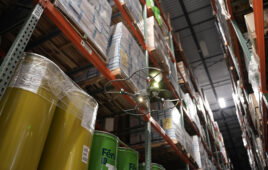In this era of trying to coax manufacturing back to life as a viable enterprise in this country, there’s a lot of focus on startups. I hear a lot of talk about incubators—an excellent concept that may be run by government, local associations or even research universities. And there’s also a great deal of attention paid to research and development. I’m a big proponent of R&D investment myself, and I’m glad to see it getting the attention it deserves in this country. But there is a less sexy part of the process of taking an idea and turning it into a company that actually manufactures something. That part is what comes after R&D: Packaging, reliability testing, inspection and analysis.
For endeavors that are looking at hundreds of thousands or parts (say, semiconductors), the easy solution is to outsource the production/manufacturing to Asia. For projects where you’re looking to produce a handful of parts, additive manufacturing may be able to play a role. But for those middling projects where you might want to create a few thousand items, you’re often on your own in finding the right solution.
So it was fascinating to find a center focusing on these challenges practically in my backyard. The Richard Desich SMART Commercialization Center for Microsystems is an impressive resource at the otherwise unassuming Lorain County Community College in Elyria, Ohio.
The idea started as an incubator for IT and software companies, and has evolved to focus on companies focused on components and hardware, including MEMS design. The first building opened in 2007 and houses 23 companies. It has supported more than 105 companies. They have been so successful, they were recently awarded a grant to help push the idea into other community colleges. A second, 47,000-sq-ft building is under construction across the street, and it is scheduled to open next Summer.
According to Matt Apanius, the center’s Director, the model is similar to what you’d see at Stanford, Berkeley, or the University of Michigan, with an important exception.
“This center focuses on the back end—packaging, testing, reliability,” he said. “These are the last barriers to manufacturing, but the most challenging.”
There is little direction from industry standards or associations on these barriers. For sensor products, post-wafer activities comprise an incredible 70% of the time and cost of commercialization. Apanius explained that the shared facilities enable an exploration of a broader scope of packaging options. What’s more, integration of packaging, reliability and simulation tools accelerate the commercialization timelines.
The Center is an impressive example of what can happen when state legislators work in a bipartisan way to create opportunities for manufacturing. Funding came from Ohio’s Third Frontier program, although only one-third of the money has been spent on equipment, with the rest poised to fill the new building. Already, the facility sports a Class 10000 clean room, a whole section with co-design and simulation software, microscopes, cure ovens, and testing chambers for temperature, UV, thermal shock, and shaking.
The back end may be the smallest bubble in the manufacturing chain, but it is probably the one that is least supported. It’s nice to see that the SMART Center is not only helping out in this area, but hopefully spreading the word to other community colleges. For more information, visit www.smartmicrosystems.com.
Paul J. Heney – Editorial Director
[email protected]
What is the most challenging part of your manufacturing process?
Weigh in on Paul’s blog at the Engineering Exchange, www.engineeringexchange.com.
Filed Under: Uncategorized





Tell Us What You Think!